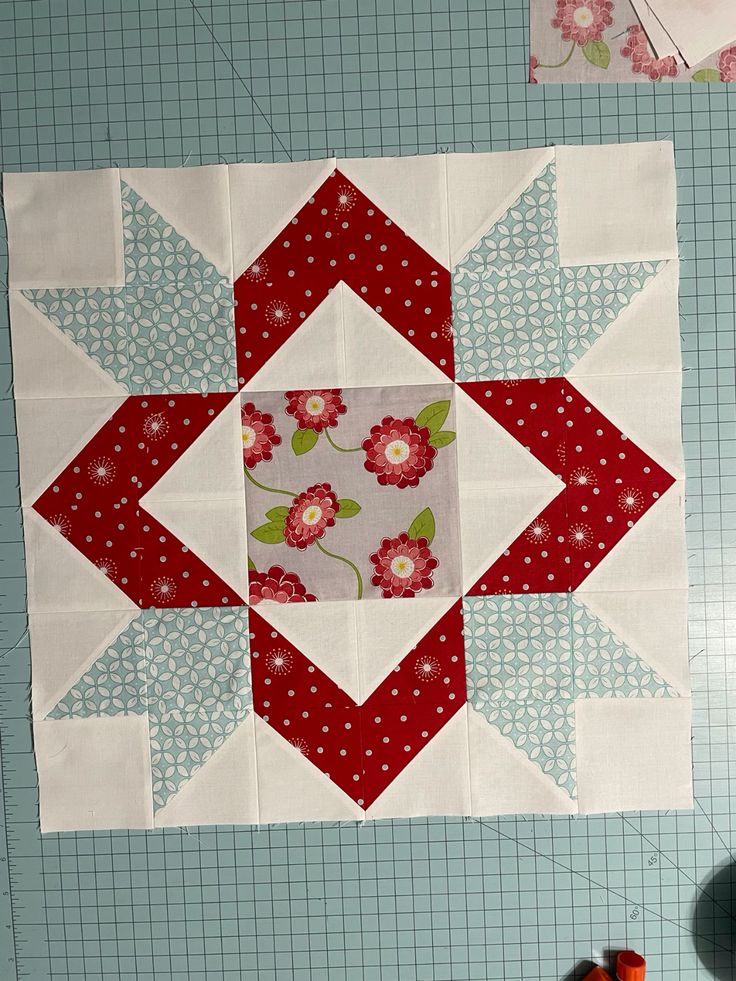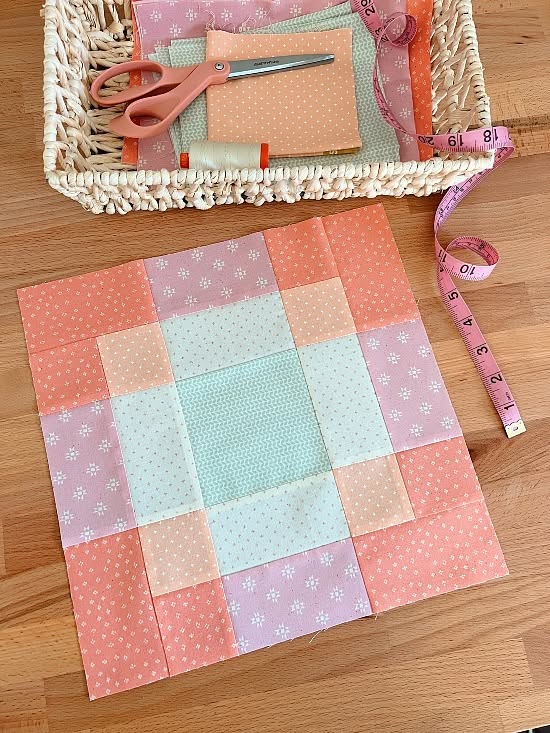
The phrase “This Simple Block Makes a Beautiful Quilt” perfectly describes the magic of quilting. A quilt is often seen as a large, complex project that requires advanced skills, but in reality, its beauty often begins with the most basic unit: the quilt block.
The simplicity of a block, when repeated and carefully arranged, can turn into something breathtaking. For both beginners and seasoned quilters, starting with a simple block offers a sense of achievement, flexibility, and endless creative opportunities.
When crafted with the right colors, fabrics, and arrangement, this humble block becomes the foundation of a quilt that is anything but ordinary.

At its core, quilting is about storytelling and resourcefulness. Quilters have historically worked with scraps of fabric, turning them into practical yet artistic creations.
A simple block serves as the canvas, allowing a maker to experiment with patterns and combinations. The beauty lies in repetition: multiple simple blocks stitched together can create mesmerizing designs. It reminds us that complexity doesn’t always equal beauty, and sometimes the simplest patterns can produce the most striking quilts. The phrase “This Simple Block Makes a Beautiful Quilt” is not just a statement about craft—it is a celebration of creativity and transformation.
Another reason simple blocks hold so much charm is accessibility. Anyone, regardless of skill level, can start with an easy block and gradually build confidence. For new quilters, it eliminates intimidation and encourages exploration. For experienced makers, it provides a blank slate for improvisation—using color play, placement, and secondary patterns that emerge when blocks meet. Whether destined to be a wall hanging, a bedspread, or a family heirloom, a quilt born from simple blocks proves that artistry and elegance can be achieved without overwhelming complexity.
One of the most appealing aspects of using a simple block is versatility. By sticking to a classic square or half-square triangle, quilters can create a wide range of designs that feel fresh and modern or traditional and timeless. Simplicity allows for more focus on fabric choices, color theory, and layout, all of which are key in turning a straightforward block into something extraordinary.Now that you’ve chosen a block, it’s time to explore how to take it to the next level. Even the most basic design can look high-end with the right strategies.
Color selection makes all the difference. Choose two to three main colors and add a neutral to balance the palette. This allows your block shapes to stand out clearly without visual chaos.
Fabric texture and print scale add dimension to your quilt. Mixing solids with florals, or small dots with stripes, can give each block more personality while keeping the overall design cohesive.
Another reason simple blocks are so effective is their efficiency. They can be cut, pieced, and sewn quickly, making them perfect for larger projects without feeling overwhelming. This efficiency also means fewer mistakes, which is especially helpful for beginners still developing their skills.
Lastly, simple blocks lend themselves to customization. They serve as a foundation for experimentation with borders, sashing, or embellishments like embroidery and applique. Every quilter can put their own stamp on the project, ensuring that even when starting with the same block, no two quilts are ever exactly alike.
When making a quilt from simple blocks, precision is key. Accurate cutting and consistent seam allowances help ensure that the blocks fit together seamlessly. Chain piecing, a technique where multiple units are sewn in one continuous thread, is a great way to speed up the process while maintaining uniformity.
Color placement is another powerful technique. By alternating light and dark fabrics, or using gradients, quilters can create striking effects. Secondary patterns often appear when blocks are arranged in certain ways, adding layers of depth to the overall design.
Adding texture through quilting stitches can also elevate a simple block quilt. Straight-line quilting enhances clean, modern looks, while free-motion quilting can add whimsical or intricate patterns that contrast with the simplicity of the block itself.
Some of the most beloved quilt patterns are built from easy blocks. The Nine-Patch, for example, is one of the oldest and most accessible patterns. By alternating light and dark squares, it creates a checkerboard effect that is simple yet stunning.
The Rail Fence block is another favorite, formed by sewing strips of fabric together and then cutting them into smaller units. When arranged strategically, it creates movement and depth, proving once again how basic shapes can form dynamic designs.
Half-Square Triangles (HSTs) also play a starring role in many quilt patterns. Despite being made from just two triangles sewn together, they open up endless design possibilities, from chevrons to stars to pinwheels.
One idea is to use a scrappy approach—mixing a variety of fabrics from your stash. This not only makes the project budget-friendly but also gives it a charming, eclectic feel. Another idea is to stick to a limited palette for a more modern, cohesive look.
Quilters can also experiment with scale. Oversized blocks make a bold, dramatic quilt, while tiny blocks create a more intricate, detailed design. Pairing different block sizes in the same quilt can add unexpected visual interest.
Adding borders or sashing between blocks can frame the design, while asymmetrical layouts can push the boundaries of tradition. The beauty of starting with a simple block is that it gives you the freedom to try something new without being bound by complicated piecing.
What is the easiest quilt block for beginners?
The Nine-Patch block is often recommended because it only requires sewing squares together, making it a perfect starting point.
How many blocks do I need for a quilt?
This depends on the size of your quilt and the size of your blocks. For example, a baby quilt may need 20 blocks, while a queen-size quilt may require over 100.
Can I make a beautiful quilt with just one block design?
Yes! Repeating a single block design can create stunning results, especially with thoughtful fabric choices and layout.
What fabric is best for simple block quilts?
100% cotton is the most common choice because it is durable, easy to work with, and widely available in different colors and prints.
Do I need special tools to make quilt blocks?
A rotary cutter, quilting ruler, and cutting mat are highly recommended for precision, but beginners can start with fabric scissors if needed.
How can I make my simple block quilt more unique?
Play with color, scale, and layout. Adding borders, experimenting with fabric prints, or trying creative quilting stitches can make your project stand out.
The phrase “This Simple Block Makes a Beautiful Quilt” is more than just a saying—it’s a truth proven by generations of quilters. By starting with an easy block, quilters can create breathtaking pieces that reflect both tradition and individuality.
From Nine-Patch classics to modern layouts, the possibilities are endless when working with simple shapes. The process is approachable, the results are rewarding, and the creativity is boundless.
If you’re inspired by this concept, why not start your own project today? Share your thoughts, experiences, and suggestions—I’d love to hear how you bring your simple block quilt to life.
